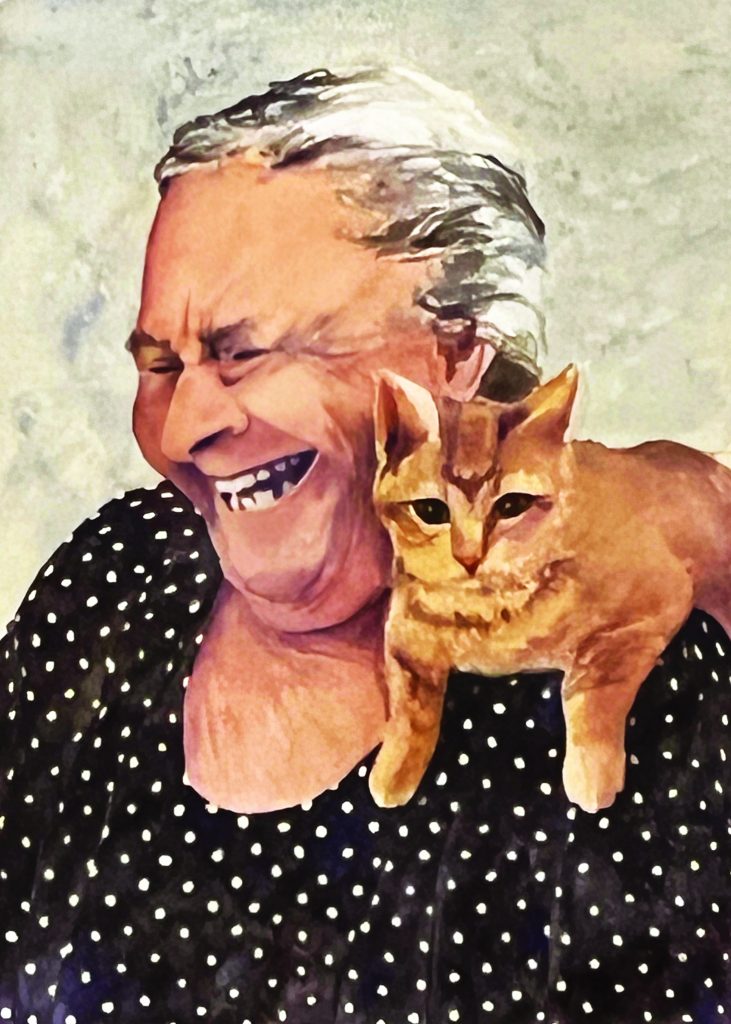
Last fall I went to Greece. I had not been to Greece before, but I hardly had two feet on the ground after landing when I started feeling strange and wonderful: strange because suddenly I’m in a country where I can’t even make out the writing on the signs in the airport—they were all Greek to me (yes, a stupid, stale, but very true joke!)—and wonderful, because even during the short ride from the airport to my digs, I felt something familiar. It was the same soft, warm—and magical (!!!)—air that rules the night in the Pacific tropics. It’s in Greece, too. Then and there, I knew this would be a fine adventure! And, also like in the Pacific tropics, there’s a brilliant blue sea (the Aegean), big white sand beaches, and delicious non-stop sunshine! Note: it’s possible I was over-reacting because I had arrived after nearly three very chilly, wet weeks in Ireland…but then, I think, no! No overreaction at all!
I was in fact on the island of Rhodes (the one that had a Colossus a long time ago…more about that maybe in another post—it’s pretty cool), which is closer to Istanbul (about 160 miles) than it is to Athens (281 miles, as the crow flies), but there isn’t anything Turkish about it. Culturally it is 100% Greek. Ancientness and history ooze and drip out of every stone on the island, and that was hard for me to get my head around. I hadn’t studied any of that culture since swerving by a bit of Greek drama in college—and then only in what seems now little more than a hit-and-run survey. It gave me a sudden awareness of my knowledge deficit, brief but unsettling enough that it made me want to go and study it again when I got home—and do it better.
Anyway, I was in Rhodes to paint with a group of Swedish watercolorists. It was a great group, organized by a painter friend whom I had met on another visit in Sweden. We painted each day under a grove of olive trees, in back of the little hotel we stayed at, but I have to admit to being distracted a bit by the antics of all the cats—including five very young, very cute kittens who flew around above us among the olive branches.
That’s a thing in Greece. Cats! They are everywhere. And though they are almost all feral, many are very friendly (like these little cuties in our olive trees) and enjoy contact with people. Many live around restaurants whose personnel regularly feed them scraps and leftovers. Kosta, the gentleman who jointly owns the hotel with his Swedish wife, Ann-Sofi, and who does the cooking, provided lots of snacks for the kittens!
One day we went out to visit a gorgeous little village, and hung out with all their cats, and a few of the residents. The woman in this painting, Konstantina, was one—my very favorite! She admitted to be 94 years of age, and as you can see, she wears the traditional black of many elderly Mediterranean women. It is the dress of mourning and worn all the time, because when one reaches such senior status, one has lost so many loved ones that dressing in anything but black doesn’t feel right. But Konstantina, despite the black, was irrepressible, and, you could sense, had a bit of cheek about her! I couldn’t understand a word she said, but she talked and she laughed, deeply and without an ounce of artifice—and the kitty-cats clearly felt free to come and go, to jump onto her lap any time they wished. You might also have sensed that, for all its tradition, her outfit was even a little bit cheeky. No solemn black wool for her. Her mourning dress was cotton, and it had POLKA DOTS!
The painting you see at the top of this page is called “KONSTANTINA AND KOSTA”. I have to admit it: I don’t know if any of the cats was called Kosta (a very common Greek male name), nor did any of them alight on her shoulder. But that all could have been true, so I painted them that way.
BTW why did I make this blog text blue? Because EVERYTHING in Greece is white and BLUE. Even the Greek flag. And all that white and blue and all that sunshine does the most wonderful thing: it makes this ancient, ANCIENT country seem eternally clean, fresh, and new—each and every day!